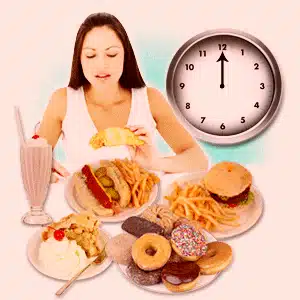Negative Thought Patterns
Living life as an adult with ADHD can be challenging. As you grow older, one takes on more responsibilities with getting the first career, pursuing higher education, romantic relationships, and personal responsibilities. With all these new obligations, there are more opportunities for symptoms of ADHD to cause impairment: trouble getting to work on-time, forgetting to pick up your prescription, or spacing out on a date.
All these seemingly failures can create patterns of negative thinking and beliefs such as “I mess everything up”, “this is all my fault”, “everything is always wrong”. With these thoughts floating in someone’s brain, the pattern of negativity will ensue.
Medication can help with the main symptoms of ADHD in helping one’s attention, impulsivity and hyperactivity but sometimes that is not enough. To ward off these negative thoughts, a person needs to learn to recognize them and the unwanted behaviors that they cause— this is where CBT comes in.
What is CBT?
Cognitive Behavioral Therapy is a therapeutic approach aimed at changing behavior. The overall goal of this technique is to recognize negative thoughts and change behavioral patterns which will, in turn, change overall cognition.CBT differs from psychotherapy as CBT focuses on the present with current thoughts and current behavioral patterns, rather than exploring past experiences. CBT has primarily been used for anxiety and depression, but with its focus on changing behavior, it can be modified to greatly fit the needs of those with ADHD
Certain negative thought patterns CBT addresses include: all or nothing thinking, selective attention and catastrophizing. Selective attention refers to just focusing on certain details and leaving out the bigger picture. All or nothing thinking refers to the thought pattern that people will either do “everything” and if they cannot, they just do “nothing”. For example, people with this type of pattern who are diets, if they broke the diet, would just continue to binge because it's “all or nothing”. Either they are healthy the whole day or are eating junk the whole day - no middle ground.
Catastrophizing, something we are all guilty of at times, refers to the idea that every negative event gets blown out of proportion. For example, someone comes late to work, in his or head, the whole day is ruined, perhaps he or she will get fired and the negative thoughts culminate.
CBT contains an adaptive aspect that stimulant or non-stimulant medications do not: CBT helps an individual learn to plan and organize and better function in society with ADHD. An example of CBT for ADHD would include the idea of breaking down bigger tasks into little parts or learning to better manage one’s time. To put it simply, CBT tackles problems.
CBT focuses on creating positive beliefs and modifying behavior by understanding one’s own cognition. With a CBT approach, a person learns to recognize and pause certain automatic thoughts like “I am a failure” or “This won’t work”. Instead of thinking “This won’t work”, a person can learn skills and strategies to change the behavior and in doing so, change the distorted thought patterns as well. An adult with ADHD will focus on changing behaviors of always being tardy or always being unorganized with new behaviors like being on time or keeping a planner.
Thoughts, behaviors, and emotions work together in ADHD. When someone has low self-esteem and is constantly late or distracted, he or she will feel turmoil emotionally. CBT works with all aspects of this triad-- challenging the beliefs, changing the behaviors and in turn enhancing one's emotional well being.
CBT vs Medication
Medication has been proven to be effective for helping the ADHD brain focus, remain attended and less distracted. In general, it is primarily used as the first line of treatment because of the amount of research and scientific support for its benefits.
Some studies investigating the effects of a CBT intervention for people with ADHD have found that CBT can be effective with and without medication. Even for people with medication, their stimulants are not teaching them to change their habits or master certain skills. Also, there are people who just do not respond well to drugs and get side effects. Thus, CBT can be beneficial in combination with medications or in some cases, on its own. CBT can also help an individual with their low self-esteem and negative beliefs by reducing distorted thought patterns.
CBT, in a group setting, can be helpful because adults will have a community of other people going through the same thing for support. In this group setting, adults can learn skills like self-management, keeping a planner and being on time for things with a group of other people. This support and level of camaraderie can just enhance the effects of CBT as people are not only learning new skills but also gaining a space where they can open up about their issues to those who truly understand.
Work Cited
Weiss, M., Murray, C., Wasdell, M., Greenfield, B., Giles, L., & Hechtman, L. (2012). A randomized controlled trial of CBT therapy for adults with ADHD with and without medication. BMC psychiatry, 12(1), 30.


